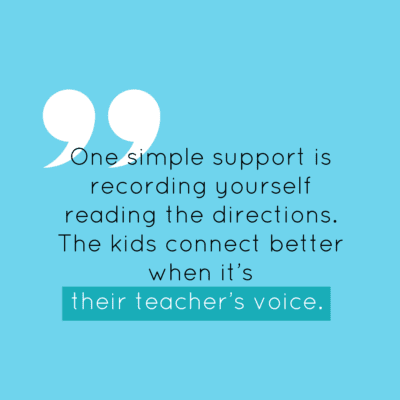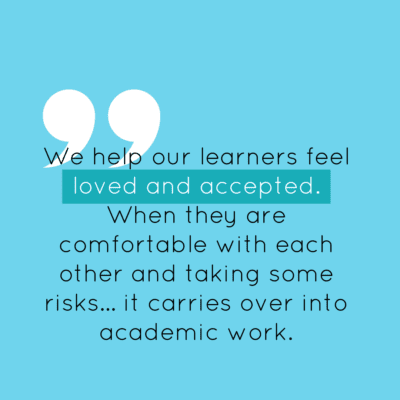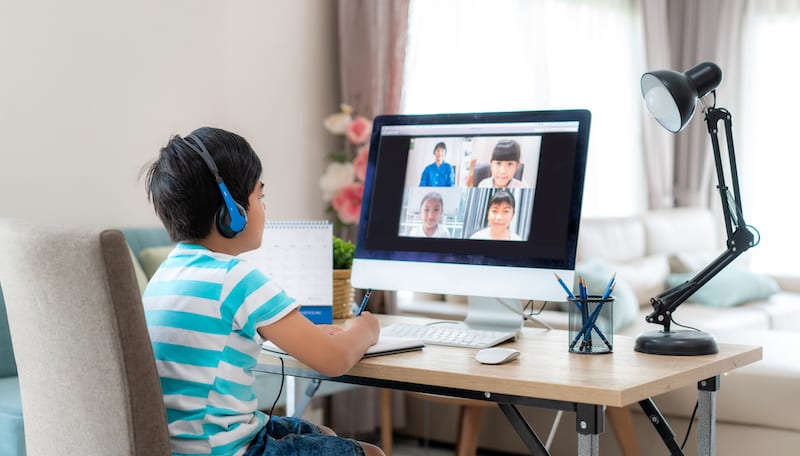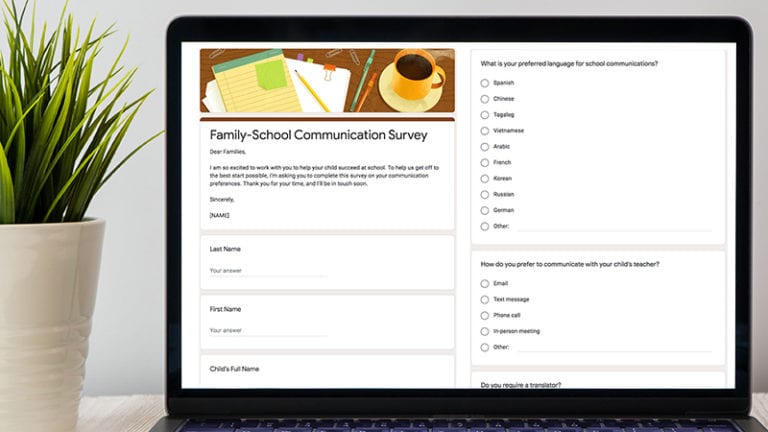Many teachers lack the tools and support to adequately meet the needs of emergent bilinguals, and newcomer students already face a host of barriers. With many of us in a virtual or hybrid model, we have to get more creative in meeting the needs of these students. We asked ELL teachers what they’re doing. Check out their tips for better serving English language learners on a remote basis:

Provide accommodations
Scaffolding doesn’t stop just because we’re not in the classroom. It just looks a little different. Walk through assignments via phone or video chat to ensure students understand the instructions. Make sure there’s closed captioning on videos. Record yourself reading aloud required texts. Utilize breakout sessions on Zoom for partner work. Make writing collaborative using a Google Doc.
Teacher Pratia Jordan says, “One simple support is recording yourself reading the directions. Yes, you can have students use screen readers, but I think the kids connect better when it’s their teacher’s voice. It’s really easy to add on in any LMS or embed in a doc.”
Avoid overwhelming students
Don’t assign lengthy, involved projects when a simple, straightforward lesson will do. You’ll also need to make sure that students aren’t overwhelmed by the many platforms they may be navigating. If they’re having trouble managing them, you might create a daily spreadsheet with links to their Zoom meetings, readings, etc. When possible, use online course-management software where everything is in one place.
Here’s what that looks like for teacher Angela Green: “We monitor their progress through a monitoring program and through the document they are working on and then use breakout rooms to give them extra help if we see they are struggling. One of the teachers will pull the ones struggling with similar issues into a room to help. We also have the ability to share controls and help them navigate documents and websites.”
Allow for self-directed learning
Kids are always more invested when they have a say in their learning, but our current situation virtually demands it. Many students have to juggle the responsibilities of home and school. They may be sharing devices with family members, so make sure everything is recorded. This way, they can access lessons at a convenient time. Provide activities that they can work through at their own pace.
Give them some choice in demonstrating their learning: verbally telling a story, teaching their peers a new word, etc. Teacher Courtney Rose recommends using “Flipgrid to allow students to explain concepts verbally instead of having to type a response.”

Build in social-emotional support
Just because we may not be together in person doesn’t mean we can’t prioritize relationships. In fact, it’s for that reason that we should make community our first concern. We need to frequently check in with our students and provide places for them to talk about their experiences. We keep them engaged in school through their personal connections to us.
Teacher Holly Stettner agrees. “We help our learners feel loved and accepted. When they are comfortable with each other and taking some risks… it carries over into academic work.”
Keep parents informed
It’s always to a student’s benefit to involve parents as partners in their child’s education. If we want students to be successful in learning at home, we need families to be on board. That means ensuring that the communication we send home is accessible to adults who may have limited English proficiency. You might need to utilize an interpreter for phone calls or texting apps that translate to keep families in the loop. Jordan recommends Microsoft Translator.
Promote authentic learning in the home
When teaching isn’t culturally responsive, it can result in disengagement. That’s why it’s so important to connect learning to kids’ lived experiences. We have an unprecedented opportunity to do that when students are learning at home. Remember that all kinds of everyday activities count as learning. Build on what they’re doing already with learning activities. For example, if they’re cooking for their families, you can introduce vocabulary around food preparation.
Stettner shares, “We come up with activities that allow them to share their culture with us and our culture with them. It gets everyone talking and builds language skills/vocabulary and experiential background.”
To further support your English language learners, check out Rosetta Stone® English.
Rosetta Stone English for Education blends language learning with subject knowledge to improve academic achievement through a culturally-responsive approach.


